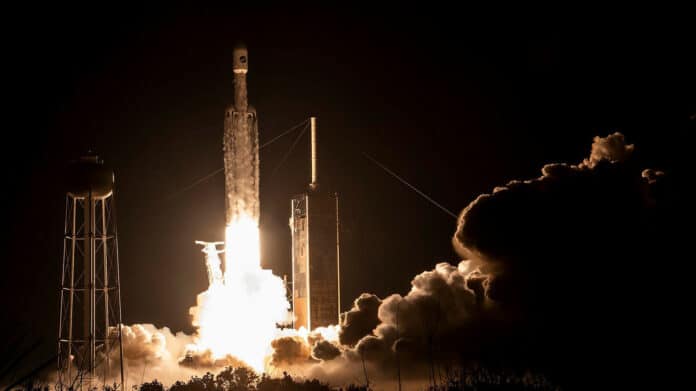The U.S. military’s X-37B spaceplane has finally launched successfully on its multi-year orbital mission after weeks of delays.
The robotic X-37B set atop a SpaceX Falcon Heavy booster lifted off from NASA’s Kennedy Space Center (KSC) in Florida Thursday night (December 28) at 8:07 p.m. EST.
This marks the seventh liftoff for the X-37B spaceplane with its largely classified cargo, but its first time on SpaceX’s Falcon Heavy, the second-most powerful rocket in service today.
The new X-37B mission, known as OTV-7 (Orbital Test Vehicle-7), launch followed more than two weeks of false starts and delays attributed to poor weather and unspecified technical issues. This launch went without incident, with the two side boosters shutting down and separating from the booster core so smoothly at around two minutes and 30 seconds after liftoff. The side boosters then executed their return maneuvers to land safely at Kennedy while the core stage continued into orbit with the main engine cutout at three minutes and 52 seconds.
The second stage separated from the core stage three seconds later as the second stage engine fired, delivering the X-37B into orbit. Due to security reasons, SpaceX shut down its live stream of the launch before the spaceplane was deployed in its final orbit at the request of the U.S. Space Force.
The Boeing-built X-37B is roughly the size of a small bus and resembles NASA’s retired space shuttle. This uncrewed vehicle is only 29 feet (8.8 meters) long with a wingspan of 15 feet (4.6 m), while each shuttle orbiter was 122 feet (37 m) long and had a wingspan of over 78 feet (24 m).
The Space Force operates two X-37B vehicles, both of them manufactured by Boeing. These space planes are primarily used as orbital testbeds to help the military understand how instruments perform and behave in the space environment. However, most information about X-37B missions, such as their flight plans and main payloads, is classified and not publicly disclosed.
The Space Force has announced that in addition to its secret payload, OTV-7 will carry experiments related to future space domain awareness technologies and the long-term effects of space radiation. This includes a NASA experiment called Seeds-2 that will expose plant seeds to the harsh radiation environment of long-duration spaceflight. The project will build upon the successes of prior experiments, paving the way for future crewed space missions.
